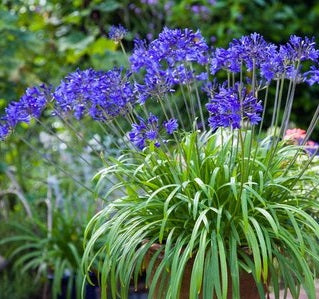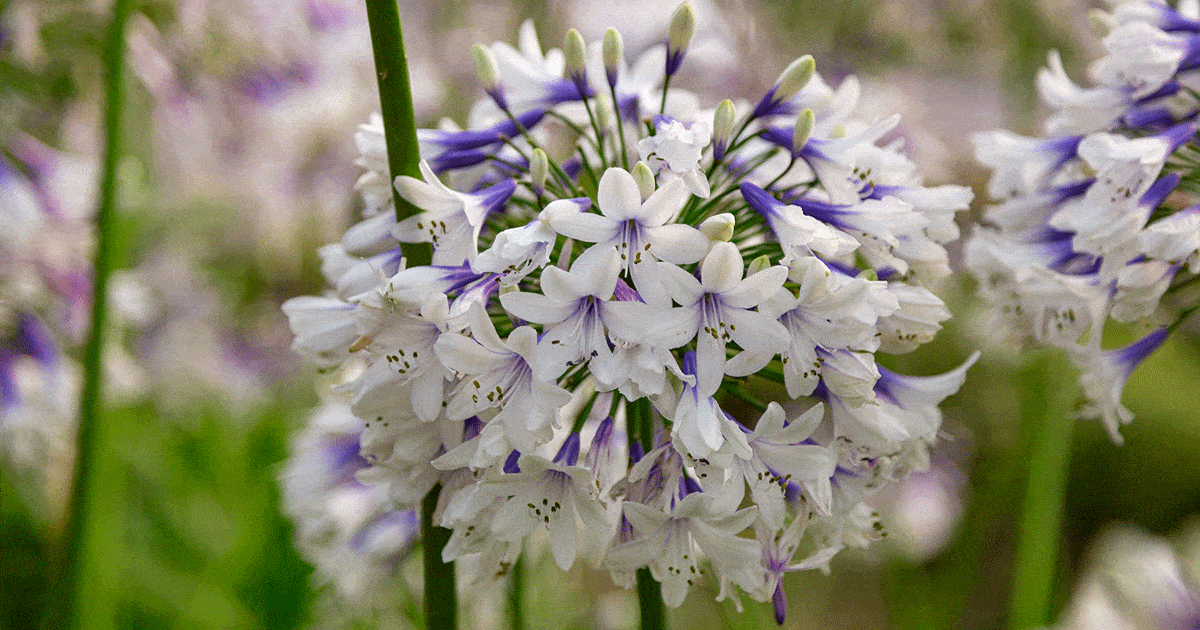Grasping the Art of Agapanthus Treatment: Essential Actions for Healthy And Balanced Development and Vivid Blooms
In the realm of horticulture, the farming of agapanthus stands as a gratifying venture for those who look for to nurture these classy blooming plants. From picking the right selection to mastering pruning techniques, the trip in the direction of cultivating thriving agapanthus plants is complex and holds the crucial to unlocking the full possibility of these organic gems.

Selecting the Right Agapanthus Range

When choosing the ideal Agapanthus range for your yard, take into consideration aspects such as climate suitability, bloom color, and development routine. Agapanthus, generally called Lily of the Nile or African lily, is available in a range of colors ranging from shades of blue and purple to white. Pick a flower color that matches your existing garden palette to produce a harmonious landscape. In addition, consider the environment in your area to ensure the Agapanthus selection you select can thrive in your specific problems. Some varieties are a lot more tolerant of cold temperatures, while others choose warmer climates. Recognizing the development routine of various Agapanthus ranges is important for appropriate positioning within your yard. Some ranges have a clumping development routine, ideal for containers or borders, while others have a more dispersing nature, appropriate for ground cover or mass plantings. By thoroughly reviewing these aspects, you can choose the best Agapanthus range to boost the elegance of your yard.
Perfect Planting Conditions
Considering the ideal ecological demands is important for effective Agapanthus cultivation. Agapanthus prospers in well-draining dirt with a somewhat acidic to neutral pH level. When growing, choose a place that gets complete sunshine to partial shade. In hotter climates, supplying some afternoon shade can protect against scorching of the leaves. Agapanthus plants are delicate to chilly temperature levels and ought to be secured from frost during winter season.
To make sure healthy and balanced development and vivid flowers, plant Agapanthus bulbs at a depth of about 2-4 inches and room them 8-12 inches apart. Including natural issue, such as compost, to the dirt can boost water drainage and fertility, advertising durable origin development. Mulching around the base of the plants assists retain dampness and reduces weed growth. Regular watering is important, particularly throughout the expanding season, to keep the dirt constantly damp but not waterlogged.
Watering and Feeding Tips
Maintaining proper moisture degrees and providing important nutrients are essential components in the care routine for Agapanthus plants. It is essential to strike an equilibrium when it comes to watering Agapanthus. If overwatered, these plants choose constantly moist dirt but are prone to root rot. During the growing period, water deeply as soon as a week, making certain the soil is well-draining to avoid waterlogging. In hotter climates or throughout durations of drought, even more frequent watering might be necessary to maintain the soil uniformly moist. Nevertheless, decrease watering in the wintertime to avoid water logged problems.
Feeding Agapanthus is important for promoting healthy and balanced growth and respected blooms. Apply a well balanced fertilizer, such as a 10-10-10 formula, in the very early springtime as new growth arises. By complying with these watering and feeding ideas, you can ensure your Agapanthus plants grow and generate vibrant, durable blossoms.
Pruning Methods for Agapanthus
Pruning Agapanthus plants at the appropriate times and with correct techniques is crucial for maintaining their health and advertising optimal growth and blooming. The ideal time to trim Agapanthus is in late winter months or very early springtime before brand-new development arises.
For flowered stems, wait till the blossoms have withered and after that trim them back to the base. This not just cleans the plant's appearance however also encourages the growth of new flower buds. Deadheading spent flowers can likewise reroute the plant's power into creating more check my reference flowers instead of establishing seeds. Nonetheless, if you wish to accumulate seeds for breeding, leave some blossoms to dry and mature on the plant.
Remember to utilize clean, sharp tools to make precise cuts and minimize the risk of presenting illness. Agapanthus. Regular pruning will aid maintain your Agapanthus looking healthy and balanced and neat while ensuring a bountiful display of beautiful blooms
Managing Usual Pests and Illness
After making sure correct pruning techniques for Agapanthus, it is necessary to resolve typical insects and diseases that can impact the wellness and vigor of try these out these plants. One usual pest that impacts Agapanthus is the Agapanthus gall midget.
One more typical concern is fungal leaf place, which provides as dark lesions on the leaves. To stop fungal diseases, guarantee great air blood circulation around the plants, avoid above watering, and remove any kind of contaminated fallen leaves promptly. Furthermore, Agapanthus plants can deal with origin rot if they are planted in badly draining pipes soil. To avoid this, plant Agapanthus in well-draining dirt and avoid overwatering. By being alert and taking prompt action against bugs and diseases, you can aid your Agapanthus plants flourish and create lively blossoms.

Verdict
Finally, grasping the art of agapanthus care involves picking the right selection, providing ideal growing conditions, correct watering and fertilizing, ideal trimming strategies, and addressing usual parasites and conditions. By adhering to these necessary actions, you can guarantee healthy and balanced growth and vivid blossoms for your agapanthus plants. Keep in mind to on a regular basis keep an eye on and maintain your plants to advertise their overall health and long life.
To ensure healthy and balanced development and dynamic blooms, plant Agapanthus bulbs at a deepness of concerning 2-4 inches and space them 8-12 inches apart. By website here complying with these watering and fertilizing tips, you can guarantee your Agapanthus plants prosper and produce vibrant, resilient flowers.
One common parasite that affects Agapanthus is the Agapanthus gall midget. Additionally, Agapanthus plants can suffer from root rot if they are planted in badly draining pipes soil. By adhering to these important steps, you can guarantee healthy growth and vivid blooms for your agapanthus plants.
Comments on “Sensational Agapanthus: Enhancing Your Garden's Appeal”